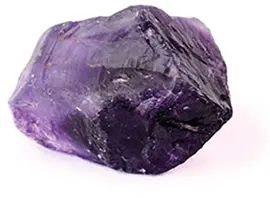
The Origins
Amethyst, a striking form of crystalline quartz, is cherished for its vibrant violet to mauve shades. This gemstone’s unique coloration is temperature-sensitive, shifting from reddish-brown to yellow or even colorless under varying heat conditions. Amethyst is predominantly sourced from Brazil, Uruguay, Madagascar, and parts of Germany and Russia. Interestingly, most commercial citrine is heat-treated amethyst.
Historical Significance and Lore
Steeped in myth, Amethyst’s name originates from a Greek legend involving Dionysus and a nymph named Amethyst. This tale, reflecting the stone’s color transition, is entwined with themes of transformation and protection. The ancient Egyptians and Greeks attributed to Amethyst powers of overcoming fear, guilt, and excess.
Healing Properties
Amethyst is celebrated for its health benefits. It bolsters the immune system, enhances blood oxygenation, and is useful in treating headaches. Known for inducing restful sleep and aiding dream recall, Amethyst is also integrated into addiction treatments, particularly for alcohol and drugs.
Magical Uses
This serene purple crystal is renowned for its calming influence. It resonates with the third-eye and crown chakras, fostering intuition and mental clarity. Wearing Amethyst jewelry can amplify awareness and reduce mental stress. As a talisman, it is believed to evoke joy and love.
Feng Shui Applications
In Feng Shui, Amethyst plays a role in purification and tranquility. It’s used to alleviate domestic disturbances and bring about positive change. Placing Amethyst in the northeastern part of a home can enhance wisdom and knowledge.
Personal/Spiritual Development
As the birthstone for February, Amethyst aids in spiritual awakening and self-discovery. It offers protection during spiritual pursuits and is highly effective in meditation, facilitating focus and easing the transition into a meditative state.
